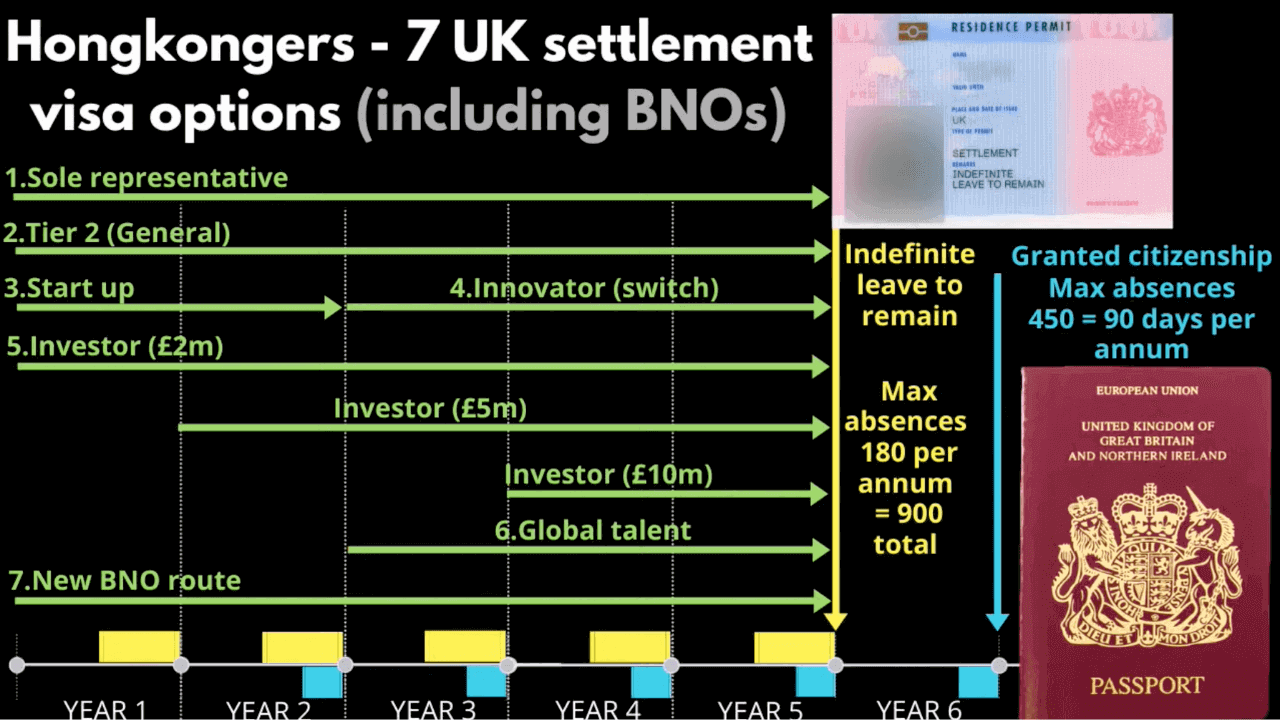
This article is going to discuss seven options which allow people from Hong Kong to enter the UK.
Individuals who did not acquire Chinese nationality and would have been stateless on 1 July 1997 automatically became British Overseas citizens (under Article 6(1) of the Hong Kong (British Nationality Order) 1986). This generally only applied to those not ethnically Chinese. But otherwise, acquisition was not an automatic process. Eligible residents had to have applied for the status between before the end of the registration period. The deadline depended on your date of birth but the last were in 1997.
While about 3m people acquired BNO status, 2.5 million non-British Dependent Territories Citizens (almost all Chinese nationals) were ineligible for BNO status. Those ineligible who wished to register as BNOs were required to have been naturalised as Hong Kong-connected British Dependent Territories Citizens by 31 March 1996. Acquiring Hong Kong British Dependent Territories Citizen status other than by birth was no longer possible after that date.
With a BNO passport you will likely soon be able to use the new pathway to British citizenship, but there are also other options such as;
- Sole representative;
- Tier 2 (General);
- Start up visa;
- Innovator visa;
- Investor visa;
- Global talent visa.
